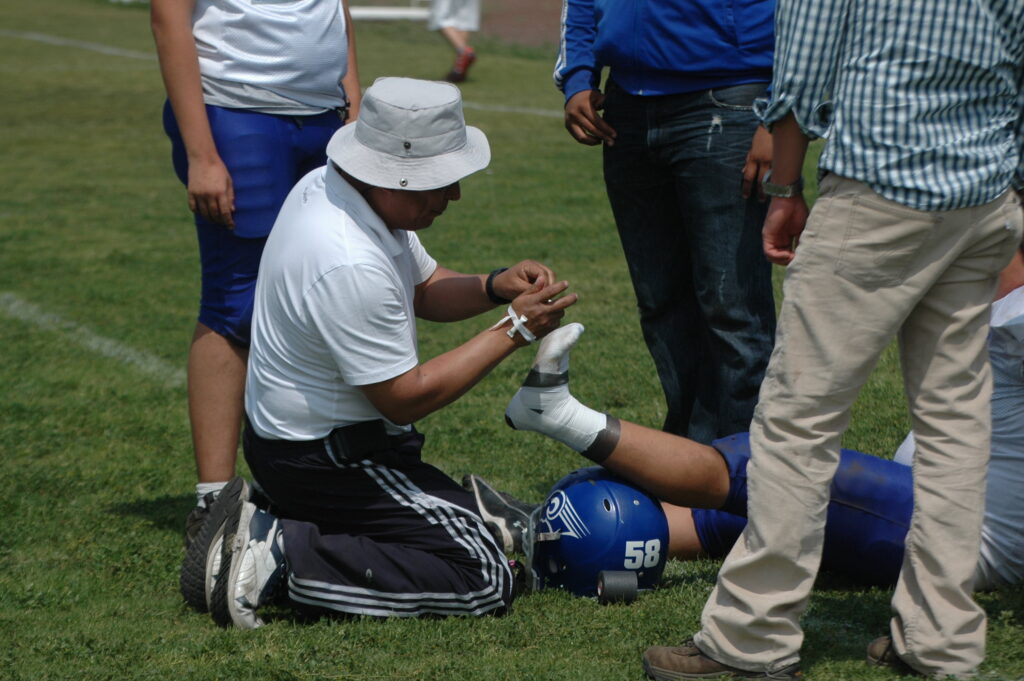Ankle injuries are among the most common issues faced by athletes across various sports. These sports injuries can disrupt performance and lead to longer recovery times. Fortunately, there are key strategies to help reduce the likelihood of ankle injuries. Here are effective strategies for preventing ankle injuries.
Warm-up and Cool-down
A proper warm-up is necessary to prepare the body for physical activity and reduce the risk of ankle injuries. Start with general cardiovascular exercises, such as jogging or jumping jacks, to increase blood flow and loosen the muscles. Gradually incorporate dynamic stretches that target the lower legs and ankles, such as ankle circles, calf raises, and toe stretches.
These activities enhance flexibility and improve the range of motion in the ankle joint. After your activities, finish up with a cool-down. Cooling down allows the heart rate to return to normal gradually and prevents muscle stiffness, which can contribute to long-term joint issues.
Strengthening and Flexibility
Strengthening the muscles surrounding the ankle joints improves stability and helps them absorb impact efficiently. This reduces the likelihood of sprains or ligament damage during physical activities. Resistance exercises like calf raises, ankle band stretches, and balance drills can enhance muscle strength and proprioception. Stronger muscles offer better joint support, particularly in high-impact sports or uneven terrain.
Flexibility is also key in preventing sports injuries. It helps maintain the suppleness of the Achilles tendon and the supporting structures around the joint. Dynamic stretching before activity can prepare the ankle for movement, while static stretching after exercise promotes recovery and reduces stiffness.
Appropriate Footwear
Shoes should provide adequate support, particularly around the heel and arch, to stabilize the foot during movement. Proper cushioning is key to absorbing impact and reducing strain on the ankle joint during high-impact activities. Individuals should also pay attention to the fit of their footwear, making sure there is neither excessive tightness nor looseness, which can compromise stability and increase the likelihood of sprains. For those engaging in specific sports or physical activities, activity-specific footwear designed to meet the demands of those movements can provide an extra layer of protection.
Bracing and Taping
Bracing and taping are widely recognized as effective strategies for preventing ankle injuries and providing extra joint stability. These methods are particularly beneficial for individuals participating in high-impact sports or activities that significantly strain the ankles. Braces are designed to limit excessive movement and support the joint, which can help reduce the risk of sprains, strains, and chronic instability. Similarly, taping techniques offer a customizable approach to maintaining stability, as they can be adjusted to provide the required level of restriction and support based on the activity or injury history.
Surface Awareness
Understanding and adapting to various surface types is key in preventing ankle injuries. Uneven or unstable surfaces, such as gravel, grass, or sand, can increase the likelihood of missteps and improper foot positioning. This can lead to excessive stress on the ankle joint, particularly during sports or physical activities that require rapid changes in direction. Regularly practicing movement on diverse terrain helps individuals develop stronger stabilizing muscles and enhance their proprioceptive abilities. These help to maintain balance and stability under challenging conditions.
Treat Your Sports Injuries Today
Preventing ankle injuries in sports requires a proactive and thoughtful approach. By implementing these strategies, you can help safeguard your performance and maintain long-term joint health. If you’re dealing with sports-related injuries or need further guidance, consult a professional to explore practical solutions for recovery and prevention.

